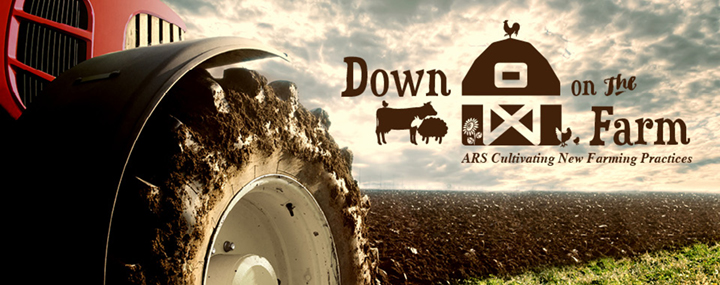
How Thirsty Are Your Crops?
Researchers use massive scales to study crop water use
People who grow plants know that potting flowers or putting vegetables in a raised bed can yield great results. But what can you accomplish with containers that hold over 85,000 pounds of soil? For a group of ARS scientists in Bushland, TX, the answer is quite a lot, as they use the enormous metal boxes to directly measure how much water crops are using. With that information, they can produce remarkably accurate recommendations on how much farmers should irrigate, providing a vast improvement over existing estimates.
The containers in question are called weighing lysimeters, and today, four of them sit embedded in a 48-acre field at the ARS Conservation and Production Research Laboratory in Bushland. The lysimeters date back to the late 1980s; the original builders planned to use them for 10 years of research to develop regional crop coefficients, which estimate crop water use for different crops using weather data. But today, researchers continue to grow crops inside and in the fields around the lysimeters, allowing them to measure all kinds of climate and agronomic variables for the soil and plants within the containers. The variable of greatest interest is crop water usage.
The lysimeters, each measuring 10 x 10 x 8 feet deep, sit on scales, which record the entire mass of the soil and plants inside them over time, including the amount of water added either by irrigation or rainfall, and water used by plants, which is returned to the atmosphere in a process known as evapotranspiration (ET). By tracking the changes in mass throughout the growing season, scientists can determine with great accuracy how much water crops use and in turn, how much they truly need. This knowledge represents a significant improvement over alternative methods for estimating crop water needs.
Many producers look to soil water sensors to monitor crop water use, according to Gary Marek, a Research Agricultural Engineer at the Soil and Water Management Research Unit in Bushland. Those sensors vary in complexity, and according to Marek, data from some sensors can be difficult to interpret because of their technical nature, while others can be inaccurate.
“Many sensors can give you an indication of whether you’re low or high on soil water,” he said, but “precision scheduling is challenging.”

The above-ground portion of a lysimeter is visible in a field, where corn grows inside and outside of the device. (Photo by Gary Marek)
Accuracy matters, since estimates that come up short could reduce yields or even kill crops, and those that call for more water than needed risk drawing down a critical resource, at added cost to the farmer who pays to pump the water.
With the lysimeters, Marek said, “We have 40 years of data for nine different crops and it’s really valuable because it’s highly accurate crop water use data, and we measure a suite of parameters – everything you’d want to know agronomically.”
Early research using the lysimeters compared crop water use under dryland and sprinkler irrigation systems, but today, the researchers are comparing different types of irrigation systems. Since 2013, a major focus of their research has been comparison of crop water usage under sub-surface drip irrigation (SDI) and sprinkler irrigation systems. Importantly, seasonal crop water use with SDI is as much as five inches less than for sprinkler while crop yields remain the same or sometimes increase with SDI. The lack of soil surface wetting with SDI means less evaporative loss and decreased weed pressure during the season.
The researchers are also comparing ET measurements from lysimeters to those estimated using a commonly-used instrument called an eddy covariance (EC) system, which uses high frequency measurements of meteorological conditions. Results indicate that the EC systems often underestimate daily ET values from the lysimeters by more than 20%, highlighting the need for improved accuracy of alternative ET estimation systems. These results also call into question current satellite based ET estimates because the satellite systems are mostly trained on EC system ET data and thus could be delivering underestimates of ET.
While the lysimeters in Bushland are not the only ones in existence, they are among the largest and best-maintained, according to Marek. In the future, he and his team also plan to apply them to another topic of increasing importance in their region: limited irrigation for forage crops, especially alfalfa. As conditions become drier and water becomes more scarce, local dairy and cattle producers cannot justify the cost of importing water-heavy forages, and are interested in ways to grow them locally. Lysimeter data might help them determine how best to do that in an area where they can’t always provide the crop with the full complement of water that it needs.
In all of their research endeavors, Marek said, “Our main goal is to help the farmer maintain profitability as our water resources decline, because there are a lot of people who have to make a decision: ‘How am I going to keep going? I have to make this work.’” – by Kathryn Markham, ARS Office of Communications
